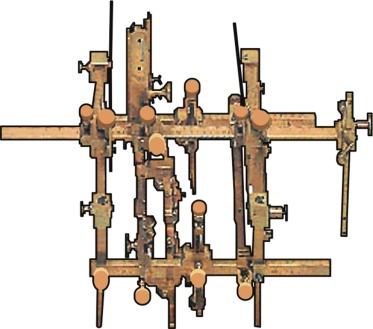Physical Address
304 North Cardinal St.
Dorchester Center, MA 02124
In the history of medicine, the advent of a new technology has often heralded a leap forward, either by enhancing the physician's perceptual acuity, revealing new diagnoses, or by placing a new tool in the physician's hand, improving the act of treatment. Thus it was, for example, with the microscope, electrocardiograph and X-rays, each of which gave birth to major medical specialties.
Computer-assisted surgery emerged from the convergence of new needs and new means, but can also be seen as the fulfillment of one of surgery's oldest dreams: a means of guidance and spatial location that would improve surgical accuracy. It thus seems logical to consider it as the prolongation of stereotactic surgery, which was developed well before the computer age: the first stereotactic frames appeared at the outset of the last century.
In 1905 Clarke and Horsley 1
1. Sir Victor Horsley (1857–1916), considered as the first neurosurgeon in Great Britain [ ]. Robert Henry Clarke (1850–1926) was an English mathematician, whose work sought to apply geometry to the study of the brain.
developed the first modern stereotactic frame, and in 1908 published a method of rectilinear topography applied to the Rhesus macaque brain ( Figure 1.1 ). Its complexity foretold the general problem of referencing and registration which are dealt with in the next chapter. What they understood was that there is no systematic relation between the anatomy of the skull and the location of the brain structures it contains, and that the only way of knowing where to position an instrument to reach a given brain structure is to draw up a 3-dimensional map [ ]. Their work included designing a dedicated saw to obtain slices of frozen rat and monkey brain with fixed thickness (2 mm), and mapping their structures onto a Cartesian space – something that CT-scanners would later achieve completely non-invasively. Once the anatomic map was complete, the frame enabled lesion-inducing electric current to be applied to different points within the brain via insulated guided needles [ ].

The Clarke-Horsley frame was precise enough for neurophysiological studies, but was too complex to set up and too invasive to be of clinical use in the field of neurosurgery that was emerging with the work of Cushing.
The Canadian neurophysiologist Mussen modified the Clarke-Horsley frame in 1918, making it less invasive, set only on the external auditory canals and inferior orbital edges. In 1947, Spiegel came back to Clarke and Horsley's work, seeking an alternative to the appalling frontal lobotomy practiced by Egas Moniz [ ], which left thousands of American children lifeless idiots for no other reason than that they were considered troublesome. Mussen delivered electric current to induce lesions in the medial nucleus and thalamus, using a slightly modified version of the stereotactic frame. His results were not much better than Moniz's 2
2. Just 6 years after being awarded one of the most controversial Nobel prizes ever, Moniz was killed in a revenge attack by one of his patients.
, but did lead to less aggressive, less hemorrhagic and less lethal forms of psychosurgery.
In Paris in 1949, Talairach published his renowned stereotactic atlas, based on serial brain dissection meticulously mapped onto 3D Cartesian coordinates; more than half a century later, it is still a reference, sometimes integrated in present-day neurosurgical navigation systems.
Become a Clinical Tree membership for Full access and enjoy Unlimited articles
If you are a member. Log in here